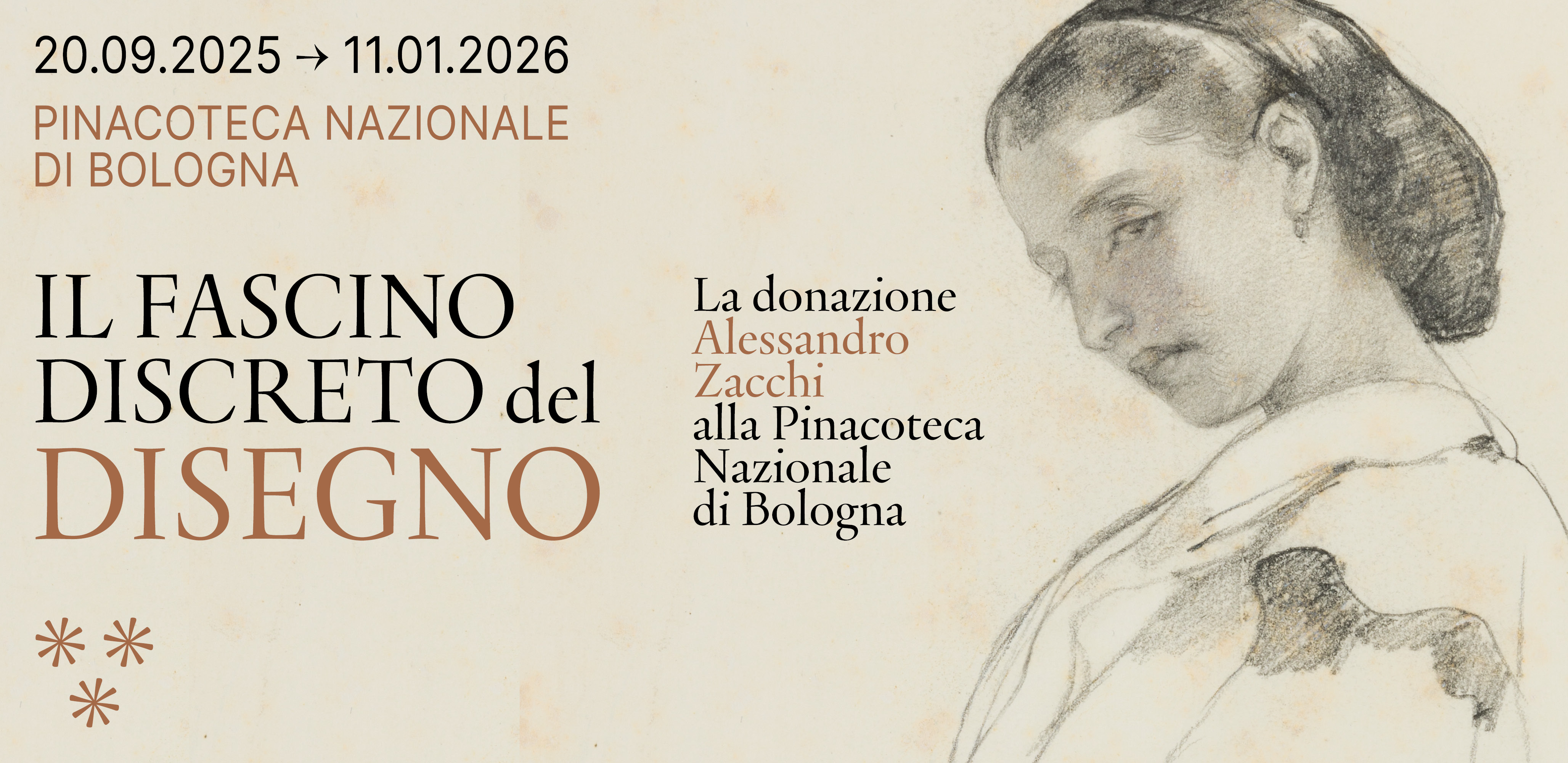
La Pinacoteca Nazionale di Bologna nasce nel 1808 come quadreria dell’Accademia di Belle Arti, l’istituto d’istruzione sorto dalle ceneri della settecentesca Accademia Clementina. L’antico nucleo, proveniente dall’Istituto delle Scienze, fu in seguito arricchito dalla straordinaria raccolta di quasi mille dipinti frutto delle soppressioni di chiese e conventi compiute dopo l’ingresso delle truppe napoleoniche a Bologna, tra il 1797 e il 1810, e nuovamente a seguito delle soppressioni del 1866 attuate dal nuovo stato italiano.
Nella sede distaccata di Palazzo Pepoli Campogrande è possibile ammirare le sale splendidamente affrescate dai principali protagonisti della grande decorazione bolognese tra la seconda metà del Seicento e gli inizi del secolo successivo: il Salone d’onore con la trionfale Apoteosi di Ercole di Canuti, la Sala di Felsina con le pitture composte e aggraziate dei fratelli Rolli, le sale delle Stagioni e dell’Olimpo, dove l’irriverente Giuseppe Maria Crespi contamina la decorazione celebrativa con i modi della pittura di genere, l’elegante classicismo della Sala di Alessandro di Donato Creti. Gli ambienti del piano nobile di Palazzo Pepoli Campogrande ospitano alle pareti alcuni dipinti della quadreria Zambeccari, la ricca collezione destinata alla pubblica fruizione a fine Settecento dal marchese Giacomo Zambeccari ed entrata a far parte delle raccolte della Pinacoteca nel 1884.
Avvisi ai visitatori
- Per lavori di ristrutturazione l'aula Cesare Gnudi è chiusa mercoledì 22 ottobre e dal 3 al 6 novembre 2025. Ci scusiamo per il disagio.
- Dall’1 luglio 2024 Palazzo Pepoli Campogrande è chiuso al pubblico per lavori di ristrutturazione e adeguamento tipologico funzionale. La riapertura è prevista per la primavera 2026.
Notices to visitors
- Due to renovation works, the Cesare Gnudi room is closed on Wednesday 22 October and from 3 to 6 November 2025. We apologise for any inconvenience..
- As of 1 July 2024 Palazzo Pepoli Campogrande is closed to the public for renovation and function-related upgrading. It is scheduled to reopen in spring of 2026.



After the decoration of the Seasons Room, in the same period (1699-1700), Giuseppe Maria Crespi painted also the vault of this room, probably a bridal chamber.
Here the process of distanting from the Bolognese tradition of the "quadrature" frescoes is completed: there is no prospectical painted architecture and the vault is entirely occupied by a natural landscape. The set is a mix of both sea-side and woodland backgrounds, all played in refined grey tones that in the sky are lighted in orange and yellow hues. Crespi depicted the Olympus Gods: on the top the Sun Chariot, hauled by flying Apollo and Mercury. In the center of the valut, Jupiter and Juno and below them two sea Gods, maybe Thetis and Ocean, offering a chess shell to Jupiter. Then Mars taking off his helmet, Minerva with her armour, Love with a burning torch and Venus with the Pepoli's araldic swan sitting on her lap.
In the band just over the ledge we can see Neptun, the Sea God, hauled by two black and white horses, together with his wife Amphitrite, holding a branch of auspicious red coral; Diane and her nymphs, with their black and white dogs resting after an hunting party, while in a corner Pluto abducts Proserpine to take her in the Underworld. On the right, the Three Parcae (Clotho, Lachesis and Atropos), the goddesses that directed the human destiny remind us that the mithological fables, just as the earthly Fame, are beautiful but transitory, just like the soap bubble blowed by the kid in the background. Usually the three goddes are represented as ugly and old women, but here they are painted as thriving young ladies reminding the visitor how fleeting the human life is, hanging by a thred that Atropo, with her micking smile, is ready to cut.










